Hi Steve,
This is the second time I submit work for your site, I’d like to thank you for previously publishing my essay on Cuban Guajiros and also thank the blog readers for the great feedback on my photographs.
This time I’d like to share a work I made back in 2009, when I grabbed my backpack, a couple of film cameras and a dozen or so Kodak Tri-X film rolls and headed towards Bolivia, where I stayed for several weeks exploring the Altiplano (Highlands), getting to know the Bolivian people, and the magic of living closer to the skies.
My trip took me through the Andes mountainrange, the Siloli desert, the Uyuni salt flats and into Potosi – the second highest city in the world – then Sucre, La Paz and the Titicaca lake. I hope that you and your readers find the pictures interesting.
The complete photo essay can be found on my website http://www.nico-foto.com/el-altiplano-boliviano. I also invite the community to visit my flickr http://www.flickr.com/photos/nicolasraddatz
Best regards to everyone, and keep up the good work Steve!
—
Nicolás Raddatz

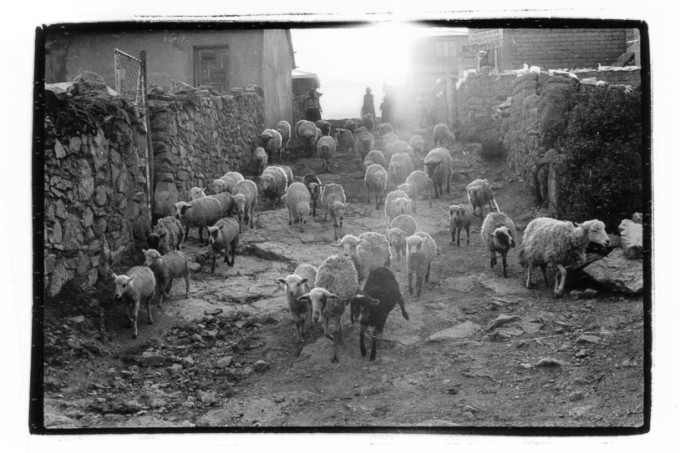
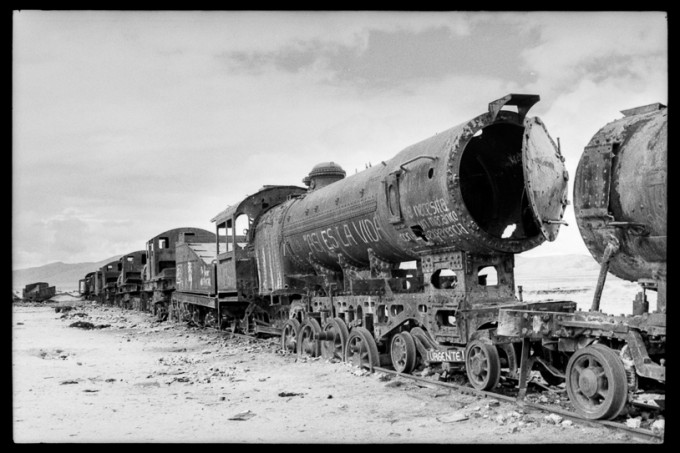
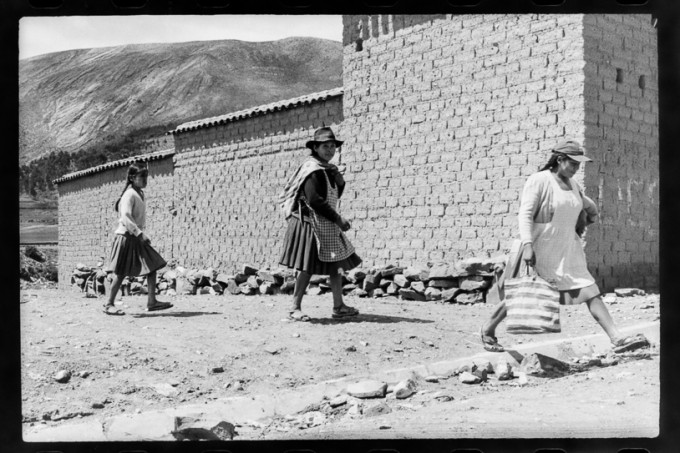
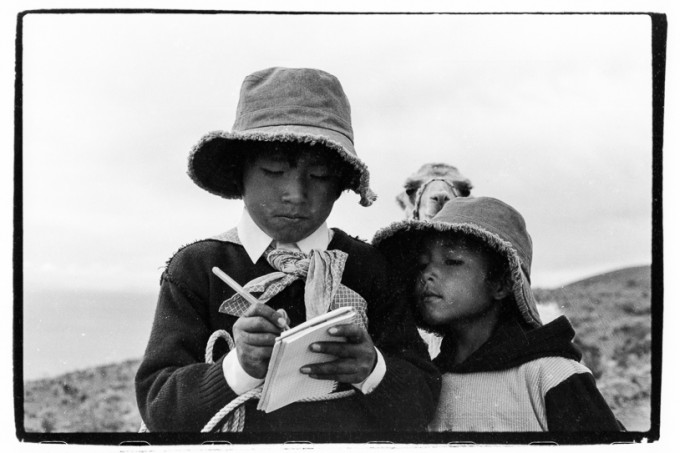
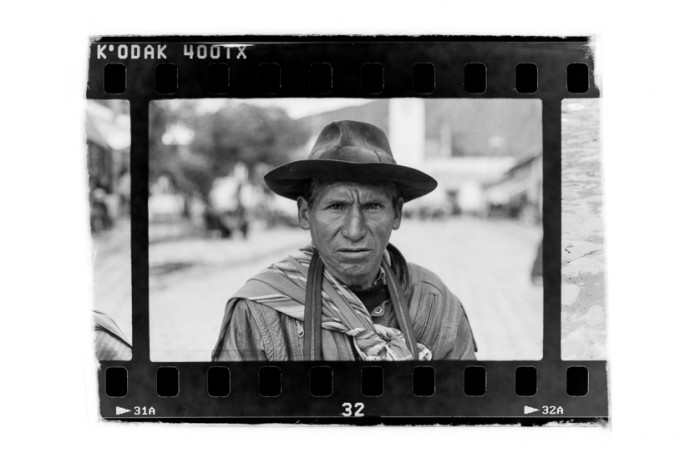


Really great photographs with so much character, many thanks for sharing them Nico!
I love the fact that you don’t even know for sure what camera/lens they were taken with, brilliant. In the last year or so I also gave up marking down what camera shots were taken with when I store my negatives and it’s much more liberating. Who cares really? Any camera is merely a tool. Look forward to seeing more of your work in the future. 😉
LOL. Having exif data makes life sooo much simpler for cataloguing images. The canon camera, believe me, was as crappy as it could be, It was an EOS 3000QD. The other main camera in that trip was a Rollei 35. Even though I would like things to be the other way around, most pictures were taken with the Canon.
Thanks for your encouragement. Feel free to visit my website http://www.nico-foto.com and my flickr stream http://www.flickr.com/nicolasraddatz
Me uno a las felicitaciones.
Película, digital, da lo mismo. Cámaras, lentes, dan lo mismo. Siempre que el fotógrafo sea competente.
Gracias!
Bravo! You have shown that one does NOT need to spend thousands on gear in order to create great work. I’ve always believed that it’s not the camera but the person holding the camera.
For travel and street photography at least, I believe any half decent camera should be enough to get the job done, the way you approach your subjects and work the pictures is much more important than gear. Having said that, i’m as much a geek gear as anyone else reading this site 🙂
Over the years I’ve had rangefinders, mirrorless, dslr – film and digital – cameras. Each of those tools offer different experiences, which, at least for me, bring excitement and inspiration into the creative process.
Thanks for posting these great photos. when I first started in photography I met a guy that use to travel to Mexico a lot. This was almost fifty years ago, so it is safe to say things change. Anyway your photos remind me a lot of his. Thankx also to Steve for posting.
thanks for sharing. Curiously I always prefer the film posts most. The ones that start I took this with my brand new Leica/Nikon/Canon full frame camera with a Voigtlander/Zeiss/Leica f0.2 lens seem to lack soul.
These make me want to go out and shoot!
Look forward to seeing more!
I especially love the last photo, would you mind sharing you scanning technique too all the film lovers? ie glass film holder or?
Hi Michael,
My film scanning “technique” is far from perfect. I made a “film holder” made of cardboard to hold the film, backlighted using a lightbulb with a white sheet in the middle to diffuse the light, and photographed the frames using a Canon EOS 7D with Canon’s EF-S 60mm 2.8 macro lens – focused using autofocus and fine tuned manually using live view. Given it was a DIY solution, the most complex aspect for me was getting the film plane parallel to the camera’s sensor.
All in all, i believe it is not a bad solution, but takes time and practice getting it right. Next time i do this, would like to have a better way of ensuring that the film plane is right, though.
Interestingly your ‘scanning’ technique probably gives you more tones than a more sophisticated one. I scan my Tri-X with a Nikon CS at 4000dpi using anr glass holders and while I love the grain I am getting I think I am really missing a lot of tones (like the midtones in your images).
http://mikael.siirila.net/projects/cambodia/
Pretty interesting comment. I had the “gut feeling” that an actual camera sensor capturing the image should be a better medium of capture than most consumer scanners out there, but i never had the chance to do a/b comparisons. What you mention seems to confirm that.
Beautiful pictures on Cambodia!
Very nice work, congratulations! It is nice to see some film black and white photos, always a different feel from digital.
http://www.thomasveyre.wordpress.com
I agree with that. But its not only the medium itself, i believe there’s something to your state of mind when shooting film that changes the way you approach pictures. The sheer limitation of 24 to 36 frames per roll makes you really treasure each and every time you press the shutter.
Great photos!
Email sent Nicolas! Many thanks.
Thanks Jeff, will be contacting you soon.
Very nice and enjoyable images. Real photography is so nice.
Thank you!
Hola! Really wonderful images. Capturing the spirit as you felt it.
Thanks Mike. It is impossible to travel to Bolivia and not feel moved by the scenery and its people. I’m glad you enjoyed the pictures.
Hey, Nico, jij bent het! We kennen elkaar van fb.
Grtz, Michiel F
Más que con una gran cámara y un gran objetivo yo diría que están hechas con una gran mirada. Enhorabuena!!!!
Gracias!
Excellent classic B&W with not a trace of modern look.
What film camera and lens were used for these?
I did not even bother in mentioning camera and lens combination, as they are so mundane. Most of the pictures were taken with a cheap canon EOS film camera and the “plastic fantastic” Canon EF 50mm 1.8. There might be one or two taken with a Rollei 35, but i’m not sure, will need to take a look at my files and see if i can figure that out. The Rollei 35, what a great little camera, i wish there was a digital equivalent.
Classic…..I also own a EOS 5 (perhaps not same as yours) and the plastic fantastic! Nice take on Bolivia Nico…well done.
Hi Nicolas,
Thank you for sharing your wonderful images….I start my day with a cup of tea and SteveHuffPhoto.com and
today I felt totally transported to Bolivia and to the people you captured so well….thanks again
Thanks, it is encouraging reading comments like yours. Feel free to visit my flickr page as well http://www.flickr.com/nicolasraddatz
Many thanks to Steve for providing us photographers with such a great place to showcase our work!
Fantastic collection. Is image #4 available for purchase as a print?
Please contact me by email: nico [at] nicolasraddatz.com
Best regards!
Hola Nico,
Son unos fotos inspirantes.
¿Podría nos decir que gente vive en Potosí hoy? No leo mucho de Potosí en la prensa.
Perdone mi experimento en Español, necesito practicar.
Muchas Gracias,
Arėjukas
Hi Aréjukas,
Indeed, Potosí still exists today, with nearly 170.000 inhabitants – it is the second highest city in the world, at 3900 meters above sea level! The landscape is dominated by the Cerro Rico (“Rich Mountain”), where mining activities have been taking place since the 16th century, where the Spanish colonizers established the first silver mines. At that time, the city grow to be one of the most populated in the world because of the wealth hidden underground. As of today, people still work on the mines, generally under very poor security and health conditions – many miners die before they get to 40 years because of lung ilnesses.
Hola Aréjukas,
De hecho, Potosí sigue existiendo hoy en día, y con unos 170.000 habitantes es la segunda ciudad más alta del mundo, a 3900 metros sobre el nivel del mar! La ciudad es dominada por el Cerro Rico, donde han habido actividades mineras desde el siglo 16, cuando los colonizadores españoles establecieron las primeras minas de plata. Se dice que por aquellas épocas Potosí supo ser una de las ciudades con mayor población del mundo, debido a las riquezas escondidas bajo tierra. Al día de hoy, las minas aún siguen siendo explotadas, generalmente en pobres condiciones de seguridad y salud – muchos mineros mueren antes de los 40 años debido a afecciones respiratorias.
In Spain there is a saying that says “It costs a Potosi” (Vale un Potosí) to refer to something of great value.
Great photos, Nico.
Exactly! I know that saying!
Thanks for publishing the article steve 🙂